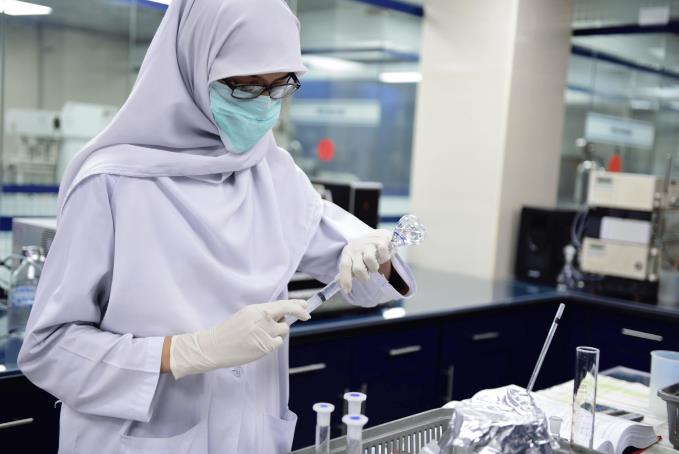Strengthening the market authorization process will improve timely access to quality-assured medicines for patients

Photo credit: SAMI Pharmaceuticals (Pvt.) Ltd.
The Drug Regulatory Authority of Pakistan (DRAP) has adopted the Common Technical Document (CTD), which comprises international standards for manufacturer-submitted data on the quality, safety, and efficacy of pharmaceutical products. The results of quality testing and batch analysis, like those being performed here at a medicines production facility in Karachi, are required information in different sections of the standardized CTD dossier.
The Drug Regulatory Authority of Pakistan (DRAP) receives more than 150 applications each month from local and international pharmaceutical companies requesting authorization to market new and generic products in the country. With U.S. Agency for International Development (USAID) support through the Promoting the Quality of Medicines (PQM) program, DRAP will begin requiring in 2019 that all such applications to be submitted via the Common Technical Document (CTD), a standard format that will facilitate the Authority’s efficient and timely use of globally accepted good review practices.
Developed in 2002 by the International Council for Harmonization of Technical Requirements for Pharmaceuticals for Human Use, the CTD is mandatory in the European Union and Japan and strongly recommended in the United States. It notably eliminates the difficulties that medicines regulatory authorities like DRAP often have in sifting through the significant amount of critical data that manufacturers provide to confirm that proposed generic medicines are therapeutically equivalent to existing branded formulations. Manufacturers also benefit through harmonized electronic submissions that avoid costly, duplicative, and resource-intensive submission processes and documentation.
Pakistan had been using the same medicines registration system since 1976. The decision to replace it with the CTD was prompted by a recommendation from the Promoting the Quality of Medicines (PQM) program, which is funded by U.S. Agency for International Development and implemented by the U.S. Pharmacopeial Convention. The program identified key required information in the CTD that was not part of the prevailing dossier, such as the source of a medicine’s active ingredients and the results of stability studies to ensure that quality, safety, and efficacy are not compromised throughout the life of a product. PQM also estimates that, once fully operational, adoption of CTD and a move to electronic submissions will improve DRAP’s application review efficiency by 25 percent and reduce the time to approve essential medicines by 40 percent.
Through initial consultations led by PQM, stakeholders concluded that a 6-month overlap between introduction of the CTD and phase-out of the old system would allow regulators and manufacturers needed time to make internal upgrades for alignment with an expanded approval process. Doing so would also help avoid product shortages that might occur if the transition were more abrupt. PQM then provided training to nearly 500 stakeholders between April and June 2017, including a 3-day session to DRAP officials on assessing CTD applications and subsequent trainings in Lahore, Karachi, and Rawalpindi for pharmaceutical industry representatives on preparation and submission of CTDs.
“Adaptation of CTD will add greater quality and evidence to submission data,” says DRAP’s CEO. “This will lead to international harmonization and good and speedy review practices to improve access to safe, quality-assured therapeutic goods,” he concludes.
